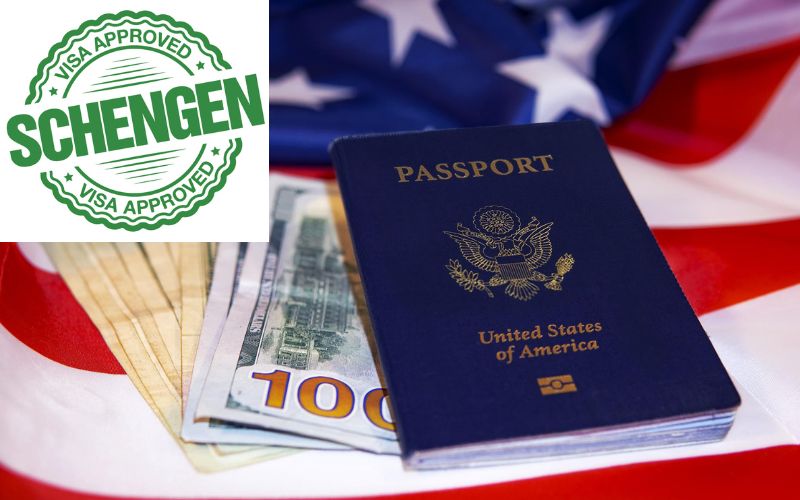The Schengen visa is a mandatory document required to travel to any European country that is part of the Schengen agreement, a visa-free agreement arranged between various European countries. As the European countries abolished borders, much easily allowed access with a single Schengen visa. The Schengen visa is, in fact, one of the key reasons why Europe easily receives a high percentage of the tourist population from different corners of the globe. Therefore, when planning for your Europe vacation, you must first understand whether you need to apply for a Schengen visa. However, with the complexity of the visa nature involved, many US citizens cannot understand the Schengen visa requirements for US citizens in Dubai or any other global city.
Do US Citizens Need a Schengen Visa?
American citizens are keenly interested in visiting and experiencing the best of Europe like any other global country. But due to the lack of clarity, they are unclear about what processes they need to follow and all documents they need to obtain before travel. Therefore, we have shortlisted some key points that will help you understand and clarify what you need to do before booking your European vacation if you are a US national residing in Dubai.
US nationals residing in the US with a valid US passport need not obtain a Schengen visa before their European trip to 26 Schengen states. They can travel within this region for up to 90 days. The purpose of the visit can be business, leisure, or tourism. In fact, US nationals residing in the UAE do not need a Schengen visa for traveling to Italy or any other Schengen region, as UAE is included in the visa-free countries for Italy and tied with the European Union. However, all US citizens residing in a country that does not have visa-free entry within the Schengen states will have to apply for a Schengen visa before your scheduled travel to the European country of your choice.
Schengen Visa for Green Card Holders in Dubai
It doesn’t matter even if you are a green card holder or a permanent resident of the US; you still go through the standard visa process laid down by the Schengen authorities for a Schengen visa.
The list of documents to be displayed by Americans for entering the Schengen region
The US nationals residing in the UAE need not present a Schengen visa for traveling to the European Union, but they still must flash the following documents to be allowed entry into the European visa-free zone on the request of the border guard force:
- A US passport should not be older than ten years and be valid for at least three months beyond their scheduled exit date from the Schengen region.
- Defining their purpose of entry with evidence – the rationale for entering or traveling to the Schengen region.
Sufficient financial funds for supporting their European stay expenses, including food, accommodation, leisure, and other expenses. - Hotel accommodation validation or proof of residing in the visa-free European region.
- Invitation letter from a local, if applicable, along with the passport and residence permit of the Italian local.
- A latest visa-size photograph is to be enclosed with your visa application that is not over three months from the date of the visa application.
- The entry to Europe visa-free zone is at the discretion of the border guard force, which has the final say to permit entry or not. For all approved entries, the US national passport holder will receive a visa stamp with their arrival date in the Schengen region. If your entry is rejected, you may have to go back to the US or their European embassy or consulate and apply for a regular Schengen visa.
Also Read: Italy Visa Photo Requirements
Which Schengen States Allow Visa-free Entry for Global Citizens?
The US nationals residing in the UAE are among the luckiest travelers when traveling within the European Union without having to obtain a Schengen visa for a short-term visit.
The following countries provide visa-free entry for Americans:
|
|
|
|
|
|
|
|
|
|
|
|
|
|
|
|
|
|
|
|
|
|
|
|
|
|
How Long Can US Citizens Stay in Italy Without a Visa-free Regime?
The US nationals can reside in the Schengen area like Italy without an Italy visa or a Schengen visa for a maximum period of 90 days within 180 days. The tourists, however, need to pay strict attention to the period they spend in Italy or any other Schengen region. Overstaying your stay can lead to deportation or heavy fines, even though the reasons can be unintentional. For a stay beyond 90 days one-time, the US nationals must apply for a residency permit citing genuine reasons for their overstay for consideration. If you were previously authorized to stay in Italy under a residence permit or a long-stay Italy visa, then your 180-day period does not feature as part of the visa-free stay.

Is Travel Insurance Mandatory for US Nationals?
Travel insurance is not mandatory for US nationals who do not need an Italy visa or Schengen visa to enter the visa-free zone. However, keeping in mind the dynamic health scenario, it is always recommended that you should have valid travel health insurance irrespective of whether you are traveling to Europe for leisure, business, or pleasure. This will help you cover your medical or accidental emergencies that may arise due to illnesses or accidents that may be unwarranted during your trip.
There are many travel insurance plans provided by various agencies for covering your European stay. All you need to quote is your travel insurance coverage area (the regions you would be entering or visiting) along with your itinerary dates. Then, with payment online, you can easily get your travel insurance in time over your email as a soft copy before your scheduled European holiday.
Suggested Read: Budget Travel Guide to Italy
What do US Nationals do if They are Rejected for Entry into the European Visa-free Zone?
If your entry is rejected into any of the Schengen regions even though you are a US citizen having a visa-free regime with the Schengen states. You will have to apply for an Italy visa or Schengen visa in the United States or at the consulate or embassy of the main country you are visiting in Europe.
What is EU Travel Authorization?
All American nationals need to apply for a European Travel Information and Authorization System (ETIAS) before they enter Europe as per the new regulations laid down by the European Union that will come into effect from May 2023. You can apply for your ETIAS online, like the ESTA, which is frequently used in the US. This process helps the EU regulators to pre-screen all candidates while confirming their status of entry before their flight boarding to any European Union country. This also aims to increase the security measures within the Schengen visa-free region. The charge for applying for an ETIAS is seven pounds and hardly takes ten minutes to be completed online. Connect with a travel expert if you still find it difficult to under the Italy visa or Schengen visa requirements. An experienced travel expert can easily simplify the entire process.
Traveling to Italy or any other Schengen region can be easy and simple if you get the right expertise or information that will clarify the Italy entry requirements for US citizens without creating many hassles.
Check Out: Italy Work Permit Visa






